 Oshida makes her mark and it looks like a swastika. 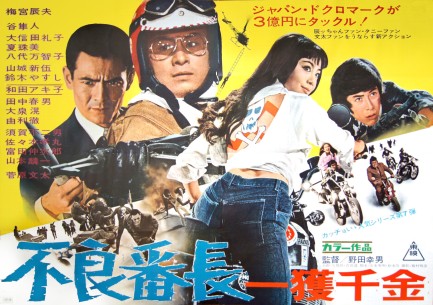
Above is a bo-ekibari style poster for the pinky violence actioner Furyô banchô: Ikkaku senkin, aka Wolves of the City: Fast Money. This piece is cousin to the standard sheet for the film we shared a couple of years ago. Just as when we showed you that one we haven't located the movie yet, but we'll keep working on it, if only to find out why star Reiko Oshida has a swastika on her back. We're guessing she's in a motorcycle gang, and it's their emblem. Furyô banchô: Ikkaku senkin premiered today in 1970. You can see the other poster here, and that entry also discusses briefly the swastika symbol in Japanese culture.
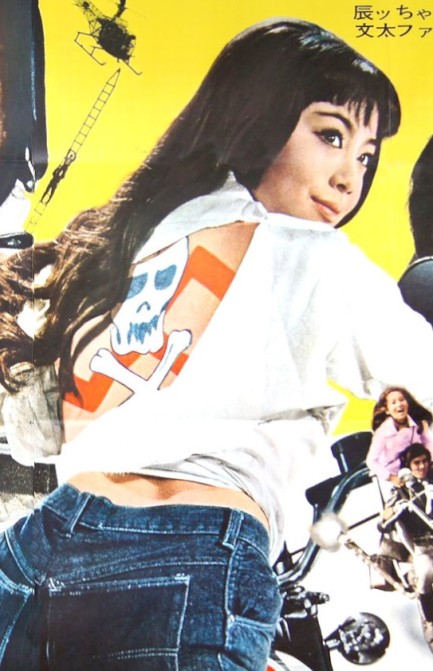
 Hold that smile. And remember, a model's job is hard, but not nearly as hard as thinking up interesting poses. 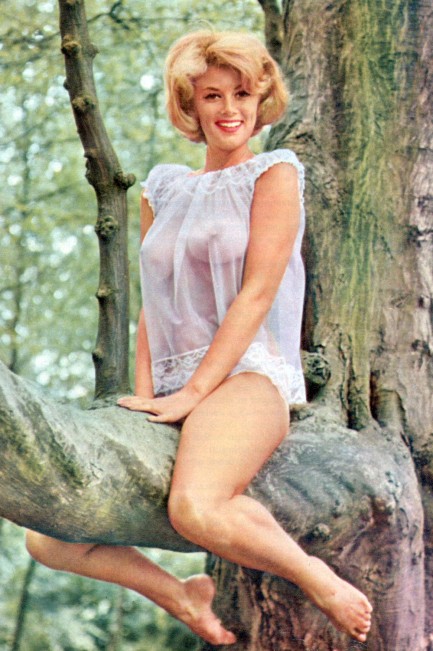
That would be Eve Eden perched on a branch in the above image. She could be pretty high off the ground—the girth of the branch indicates that. We guess she climbed a ladder, or maybe even a scaffold. The photo made the Pulp Intl. girlfriends smile. Verbatim: “No guy ever has to climb a fucking tree for a picture.” Fair point. Eden probably had the same thought waiting for the photographer to say he'd gotten the shot he wanted. You've probably never heard of her. During a nine-year cinema career she appeared in nearly twenty films, including 1959's Naked Fury and 1960's So Evil, So Young, but most of those roles were tiny or uncredited. However she was also a popular magazine model and may be better remembered for her work in that medium. We saw her in a 1969 issue of Adam last year, but this is a much better shot. You have to applaud her effort.
 The return of the dragon. 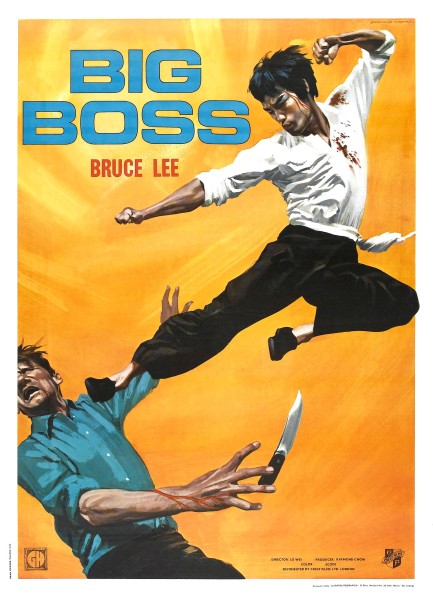 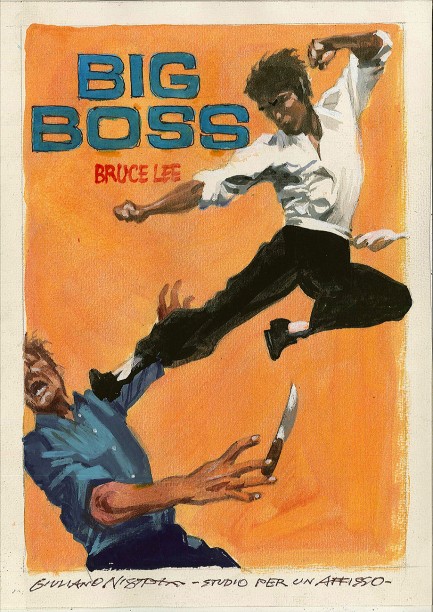
A while back we shared two Italian posters for the Hong Kong action flick Tang shan da xiong, aka The Big Boss. Those were painted by Averado Ciriello, and one of them, with star Bruce Lee depicted as moving so fast he had seven blurry arms, brought to mind those moments in The Matrix when Neo and Mr. Smith fight at mindbending speed. We're looking today at more art from the movie. The above efforts—a finished poster and a preliminary study—were painted by Italian artist Giuliano Nistri for the film's British release by Crest Films. We included the study because we wanted to highlight a website that you should visit, where you can see more of the same and gain a greater appreciation for Nistri's work. It's at this link. Tang shan da xiong premiered in England today in 1971.
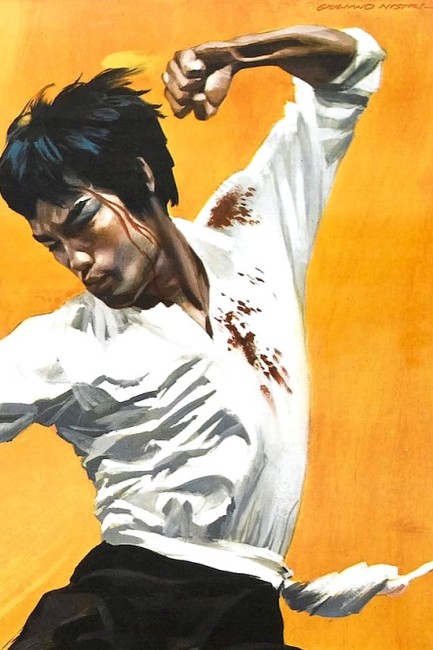
 When people say the town is dying they mean it literally. 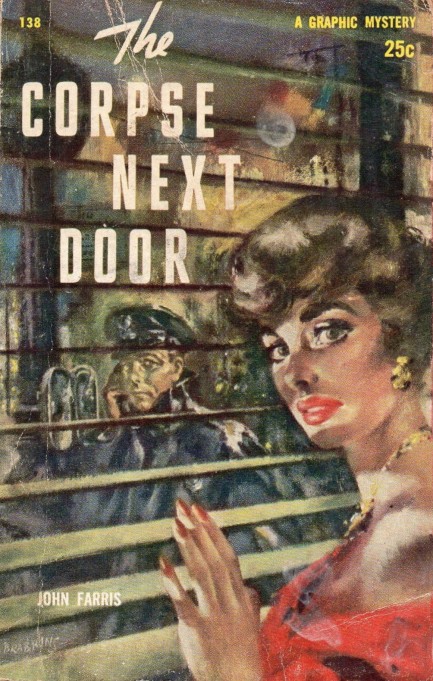
Oliver Brabbins teamed with Graphic Books to provide beautiful cover art once again, this time for The Corpse Next Door by John Farris. Before we get into the fiction let's take a few moments to appreciate how good this art is. Brabbins has created multiple levels of perception in this piece. The cop outside on the street at a call box sees the woman in the foreground, and via her direct gaze, she sees you. Whatever nefarious deed she's up to, you're in it as well. Brabbins nailed the close-up perspective of the blinds, where the angle becomes edge-on in the middle of the scene, allowing the cop to be visible. Assorted impressionistic street details form the background, and daubs of gold at the woman's ears and neck complete this top tier effort. With art like this, the book better be good.
This was the debut novel from Farris and came in 1956. In the story, Bill Randall, cop in the town of Cheyney, suspects murder and a frame-up in what had been officially closed as a jailhouse suicide. His belief that the official determination is wrong pits him against his own department, specifically his chief Sam Gulliver, who's stubborn, angry, physically imposing, and dangerous. As Randall digs, the murder seems connected to past crimes and the future political career of local chosen boy Nathan Fisher, who has a raft of problems that threaten to derail his lofty ambitions.
The narrative is gritty and the action is a cut above, particularly in a scene during a shootout where a character shoves a refrigerator down a flight of stairs at two gunmen. On the minus side there's an unlikely plot device in which a woman who's shot in the woods removes her bra before dying in order to impart to the police that they should seek a clue at a pawn shop called Brassier's. We let that bit pass and were rewarded with a stimulating climax, so on the whole the novel was a plus. Farris would go on to success in horror fiction, including with his 1976 novel The Fury, made into a 1978 film starring Kirk Douglas. The talent is clear in this first book. We'll keep a watch for more of him on the auction sites, and certainly for more of Brabbins.
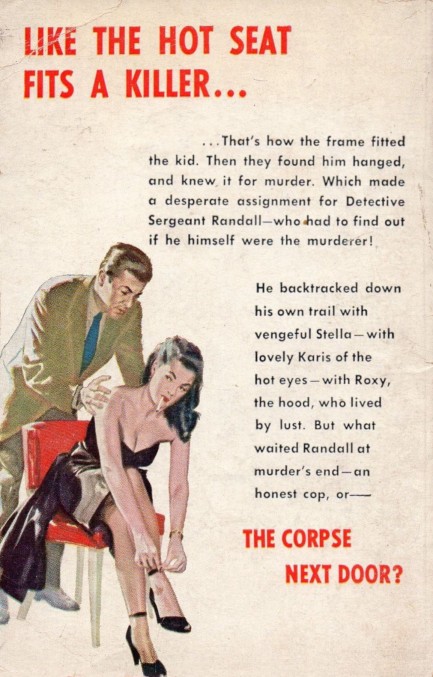
 Gemser adds a few degrees to the equatorial heat. 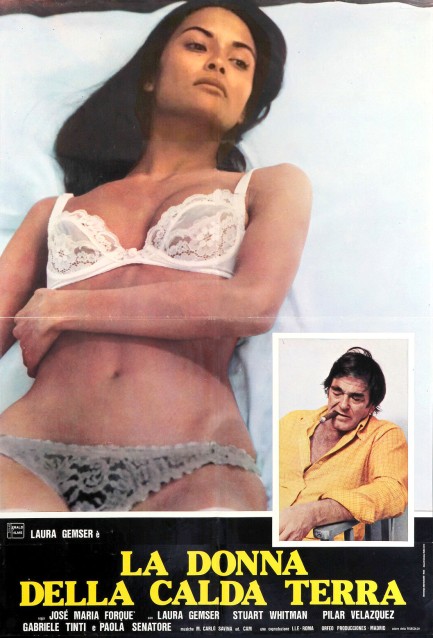 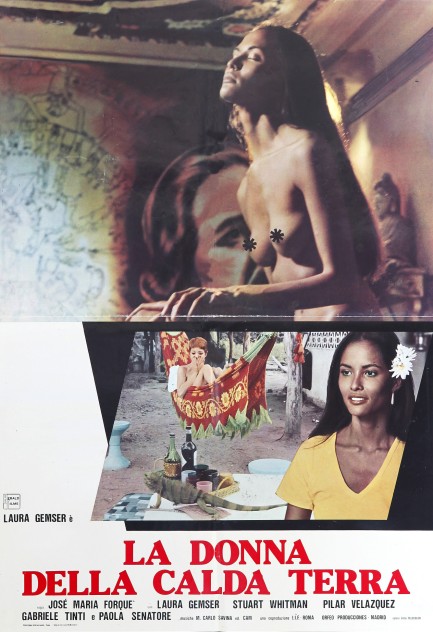
Yup, Laura Gemser again. It's just one of those things. La donna della calda terra premiered in Italy two days after Emanuelle e gli ultimi cannibali, so you get to enjoy her twice this week. Above are two posters for the former film, which was originally made in Spanish and released as La mujer de la tierra caliente, then retitled in English as Emanuelle - A Woman from a Hot Country, and, more succinctly, Fury. By this point Gemser's Emanuelle series had pitted her against everything from slavers to cannibals, but here she headlines something close to a straight drama, as she meets Stuart Whitman while both are hitchhiking the hot backroads of Venezuela. As they sit together in a horse trailer being towed across the country, they tell each other their tragic histories.
We've made fun of the bizarre plots of Gemser's movies, but this attempt at unsensationalistic drama is conceptually flat and the screenplay is terrible. Our favorite line: “Don't pay too much attention to women. We have days in which we see everything distorted.” We'd retort that men have entire lifetimes in which they see everything distorted, which is why the world is fucked. *checking credits* Yeah, the screenplay was written by men. Well, they dropped the ball here, not just because of bad writing, but because—and we never thought we'd say this—Gemser's movies need rampant weirdness to be watchable. So give up being normal and enbrace the bizarre. Bring on the slavers and cannibals. They were sorely missed. After premiering in Spain in July 1978, La donna della calda terra opened in Italy today the same year.
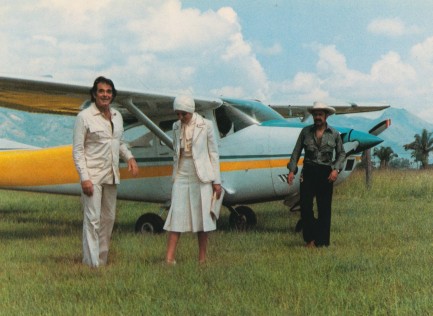 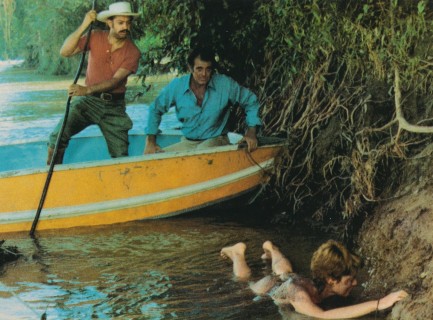 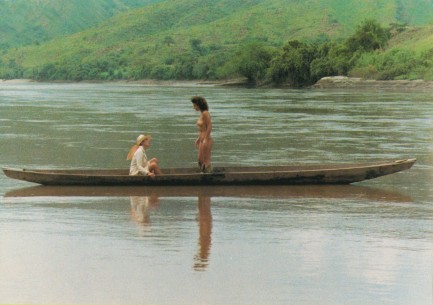 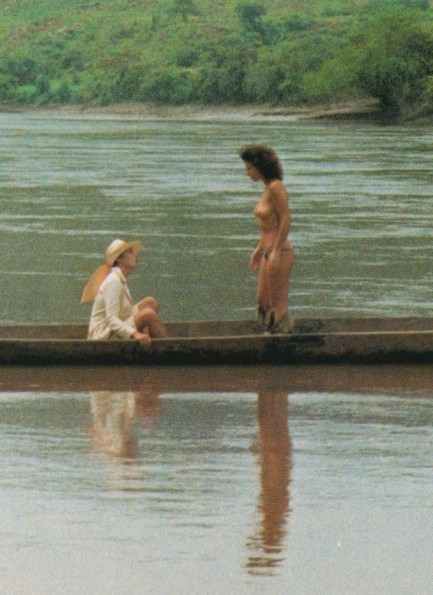  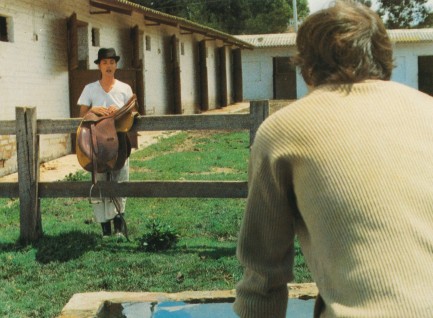 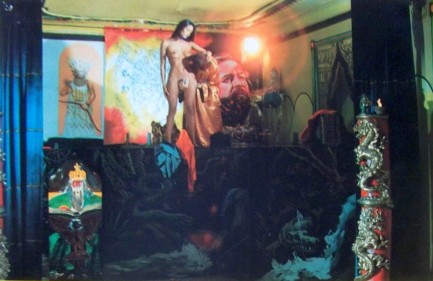 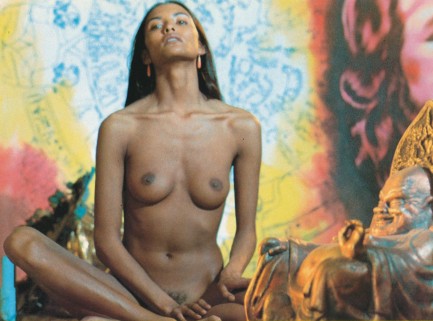 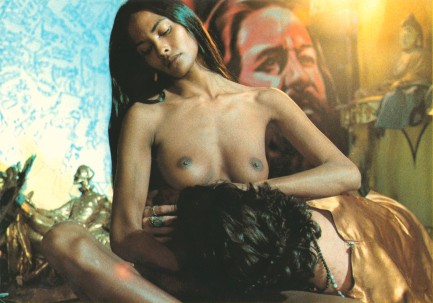 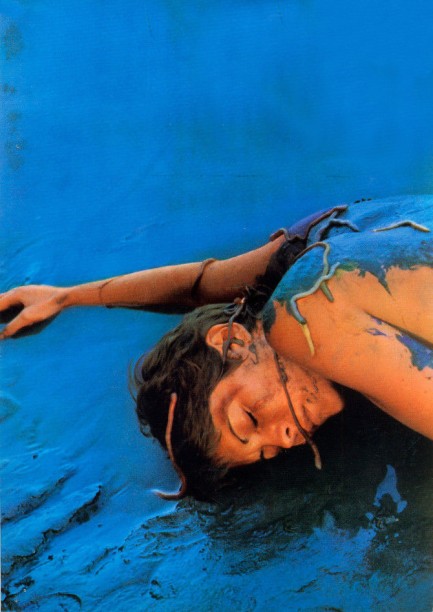 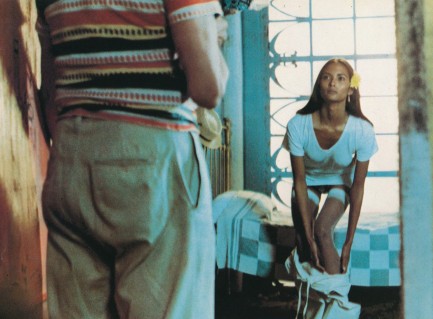 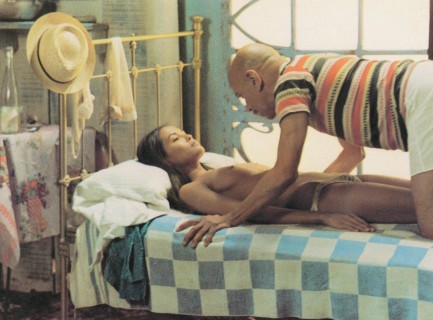 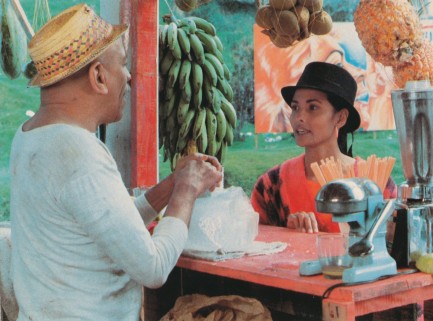 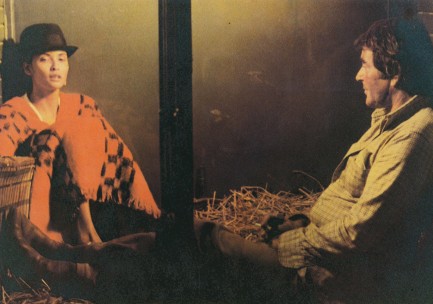 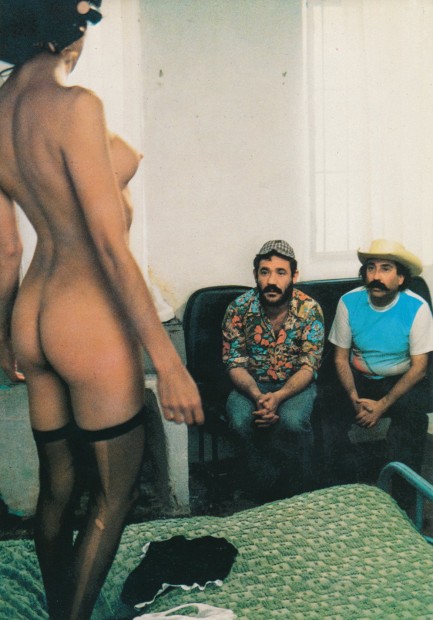 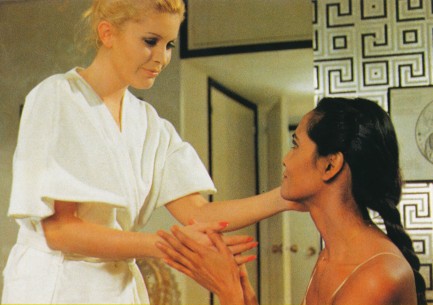 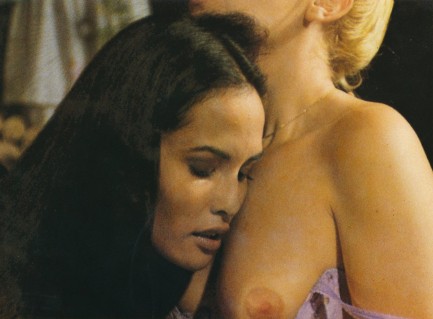 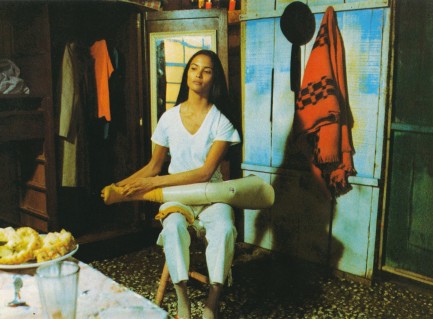 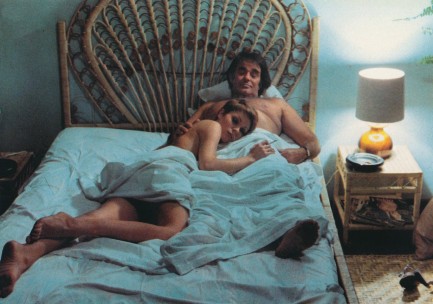 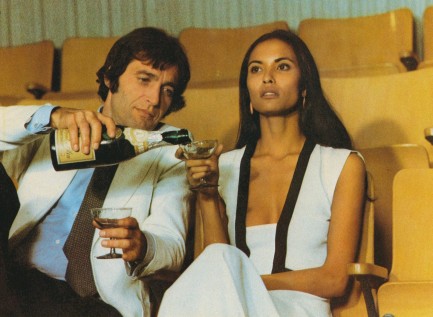 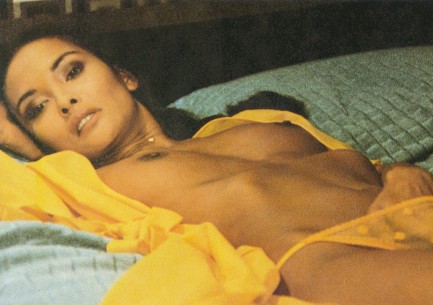
 And please do so filled with crushing regret and in prolonged pain. Now get lost. 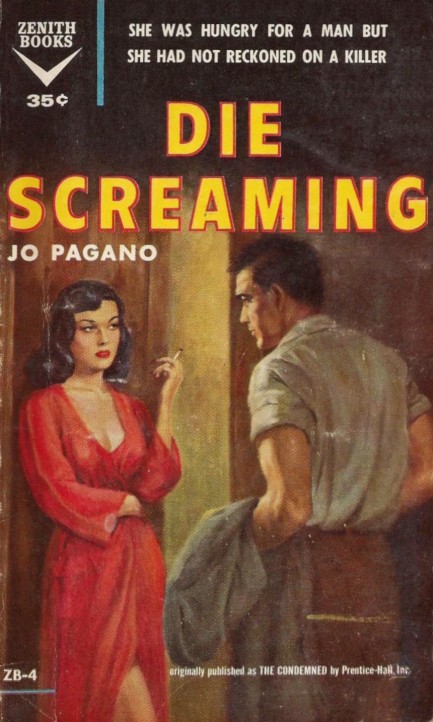
Above: an uncredited cover for Jo Pagano's 1958 novel Die Screaming featuring art of a femme fatale giving the male figure the exact look your wife or girlfriend gives you when she's absolutely over your shit. This first appeared in 1947 as The Condemned, which was adapted into a 1950 movie called The Sound of Fury, and in turn re-released as Try and Get Me!, before reverting back to literary form and becoming what you see above. We like Die Screaming best as a title, but Try and Get Me! is actually more descriptive, as the book deals with an everyman who at his lowest point finds himself in thrall to a vicious criminal, leading to a murder, a manhunt, and the inexorable enactment of justice. We may check out the movie later.
 Reiko strikes down upon her enemies with great vengeance and Furyo anger. 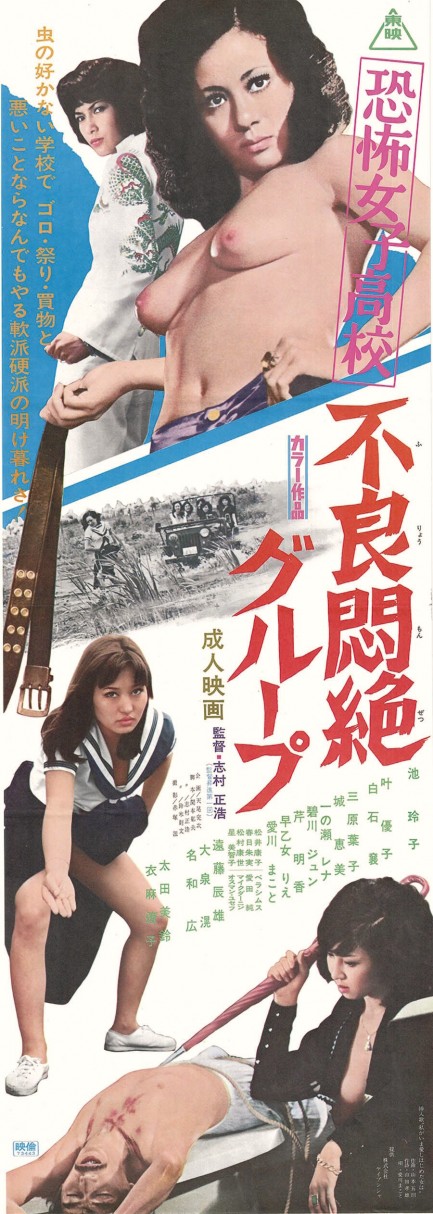
More Reiko as soon as that? Why yes. Above you see her on a promo poster for her pinky violence flick Kyofu joshikôkô: Furyo monzetsu guruupu, known in English as Terrifying Girls' High School: Delinquent Convulsion Group. We shared this art as part of a collection ten years ago but didn't discuss the film. Reiko and Yûko Kanô star, and as the title suggests, it's about the rough and tumble lives of female juvenile delinquents. Reiko's high school is run by the Red Rose Clan. Things go very right when she's elected head of the gang, then very wrong when her father dies in a brutal auto accident, she's transferred to the outcast class for non-payment of tuition, the Red Rose tosses her overboard, and she finds out her mother is indulging in sexual extracurriculars. Talk about a run of bad luck.
But you can't keep Reiko down. She fights her way into the good graces of a group of girls that hang out in a local bar. They decide to form a new gang called the Union Clan to fight the Red Rose and take control of the school, which is beginning to descend into anarchy. Soon after forming her new gang, Reiko learns that her father's accident was orchestrated. Like any devoted daughter, she vows revenge. It won't be easy, but once a girl has dealt with the evils of high school, a cabal of heavily armed international drug dealers is a cakewalk. As required by the pinky violence genre, what follows are clouds of cordite and showers of sparks. Doesn't that sound fun? Reiko never disappoints. Kyofu joshikôkô: Furyo monzetsu guruupu premiered today in 1973.
 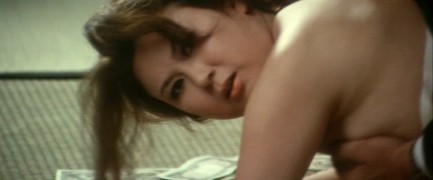 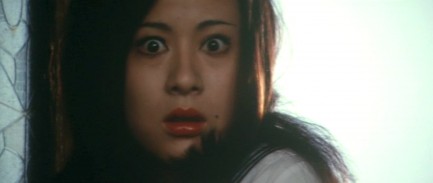 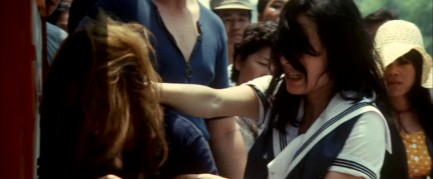 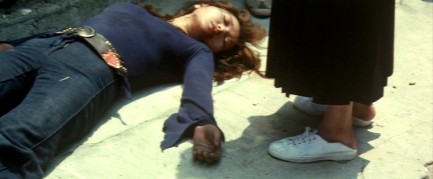 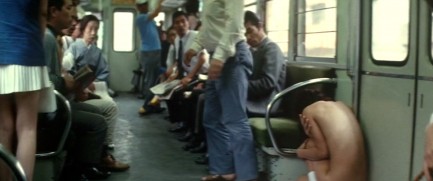  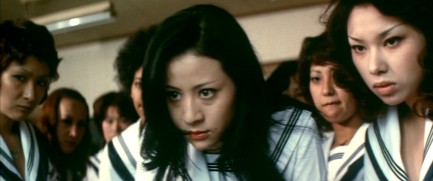 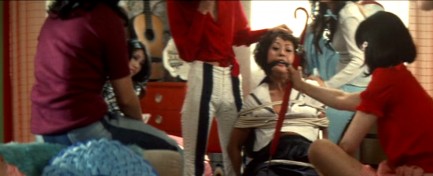  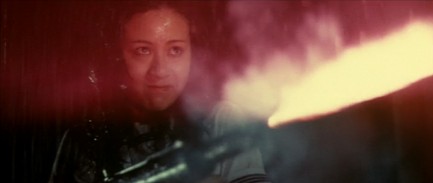  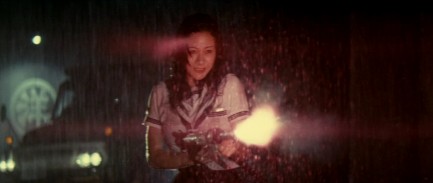
 Serious trouble just rolled into town. 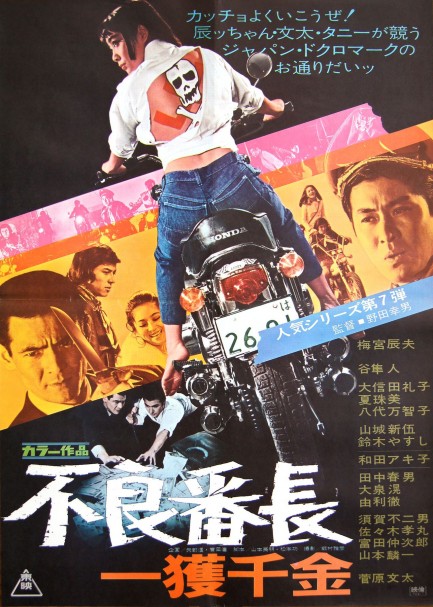
Furyô banchô: Ikkaku senkin, for which you see a killer poster above, was known in English as Wolves of the City: Fast Money, or sometimes Wolves of the City: Instant Fortune. It starred Tatsuo Umemiya, Reiko Oshida, and Bunta Sugawara, and we hear it's good, but we weren't able to find it to watch. We may circle back to it, though, because we located more promo art Toei Company made for it—for example the cool photos of Umemiya and Oshida you see below. You notice the swastika tattoo on Oshida's back? We've mentioned before that the symbol's usage predates its appropriation by Nazi Germany, and has different meanings in Japan. However, in this case we suspect those meanings—good luck, eternity, etc.—have been set aside and the filmmakers meant to use the symbol's association with Nazis to suggest rebellion or lawlessness. If asked, they may have claimed they weren't, but they'd have been messing with people's heads in the same way as the Prussian cross in this post was meant to. But we won't know until we watch the film. We'll keep the rest of our promo material in reserve in case our search is successful. Furyô banchô Ikkaku senkin premiered in Japan today in 1970. 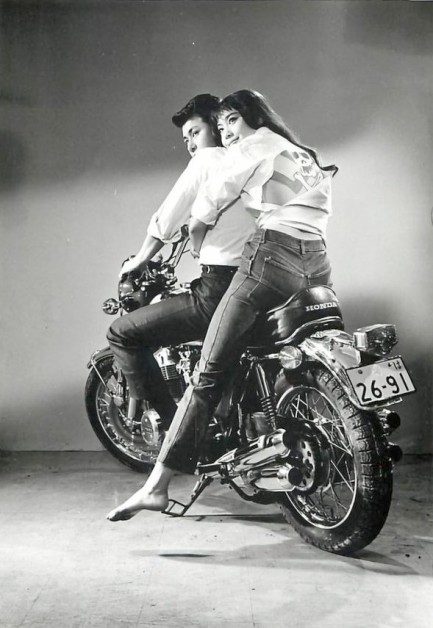 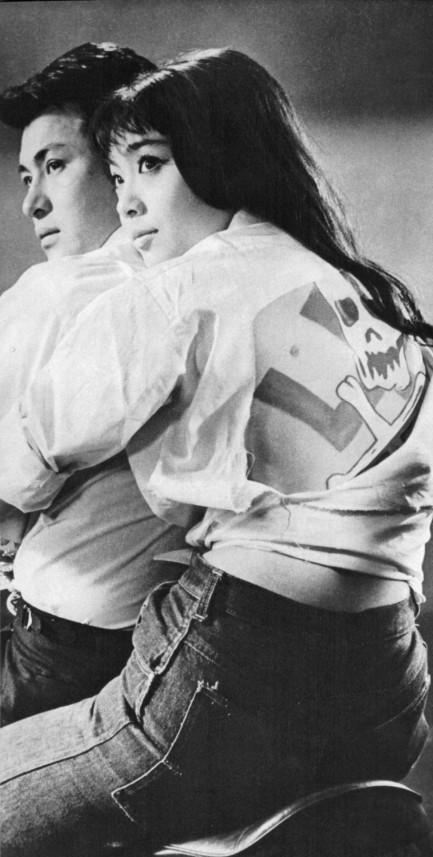 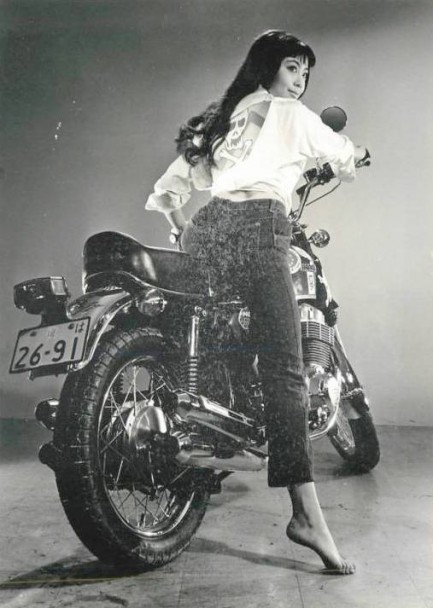
 You moved like they do. I've never seen anyone move that fast. 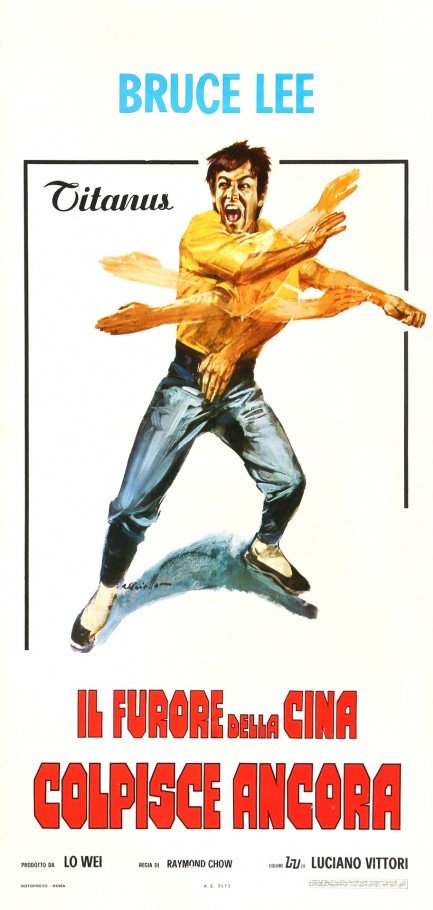
Usually when we share a foreign poster for a film it's because the foreign version is markedly better. The original poster for Bruce Lee's Hong Kong-produced martial arts thriller Tang shan da xiong is actually pretty nice, but the Matrix-like motion capture attempt on this Italian version is just too cool to ignore. In Italy the film was titled Il furore della Cina colpisce ancora, or “China's fury strikes again,” and the art is by Averado Ciriello. It's an inspired effort, which he almost equals on version two, at bottom. There are also two Japanese posters at this link, and it's here that we mention that the movie was titled in English The Big Boss and Fists (not Fist) of Fury.
Bruce Lee movies are not to be watched for their acting or complex plots, and the dialogue in this one is laugh-out-loud bad. The film is a morality play about Lee, an expert fighter, having promised his wise old uncle never to fight again because “violence is never the answer.” Of course he's immediately dropped into a pit of evil when his new job in an ice factory turns out to be a front for drug smuggling. His intervention in the racket comes exactly too late to help his cousin, who's murdered by the villains, but when he finally fights, it's with lightning quickness and almost mystical ability, as he lethally wades through hoards of baddies and cripples the smuggling enterprise single-handedly, or double-fistedly. Maybe violence is the answer after all.
But it isn't quite that easy. These traffickers didn't reach the top of the heap for nothing. Their continued commitment to violence demands that Lee either walk away or willingly descend into the same cycle. As always there's a final showdown with a crafty old karate master who pushes Lee to his limits. His moral progression from purity through temptation, corruption, shame, revenge, and consequences is cheesy but it's also very entertaining, and one thing is clear. He never needed digital help to dazzle the eye. He'd demonstrate his gifts in three more movies, then be gone, at the age of thirty-two, with his final film—his biggest hit Enter the Dragon—released posthumously. Tang shan da xiong premiered in Hong Kong in 1971 and reached Italy today in 1973.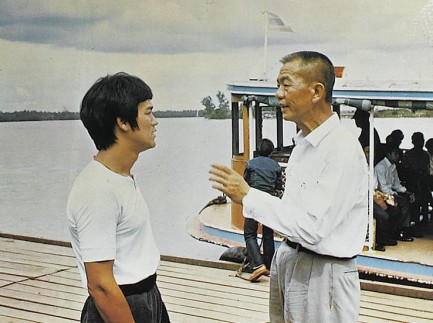 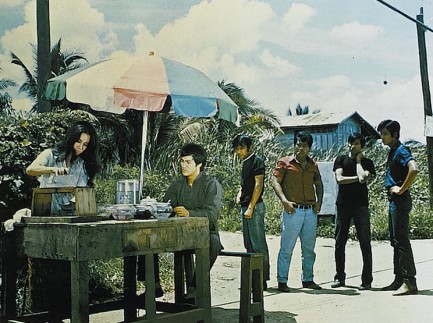 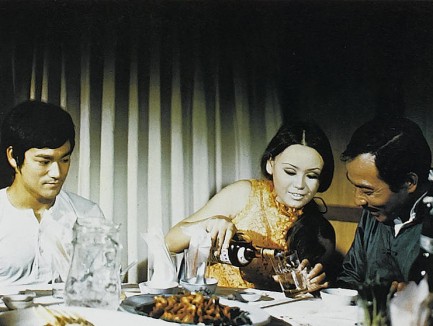 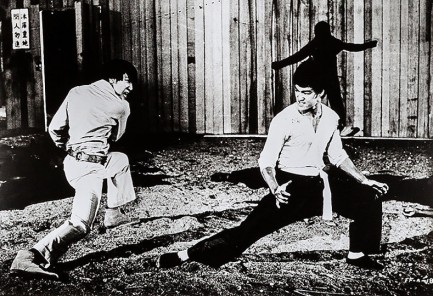 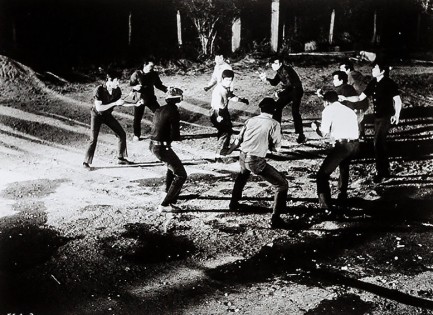 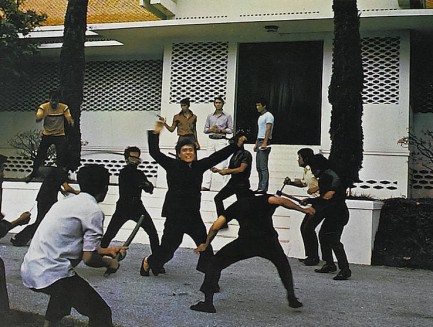 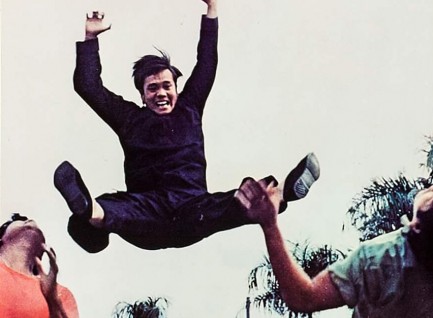 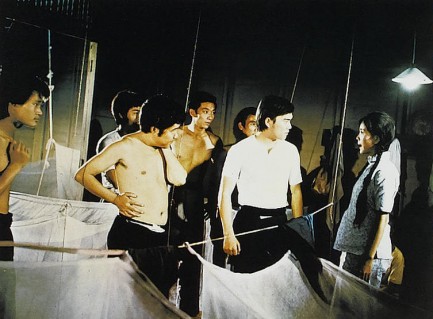  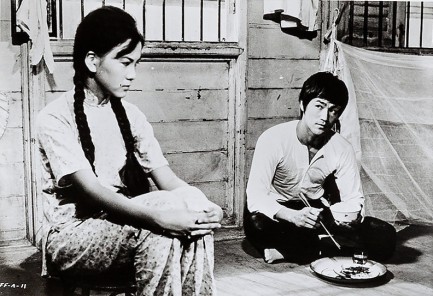 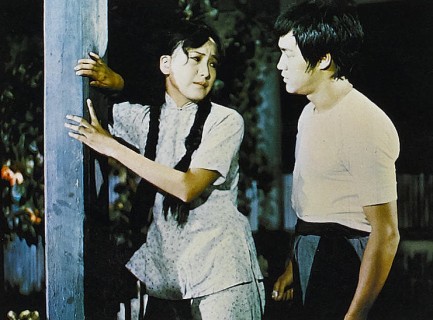 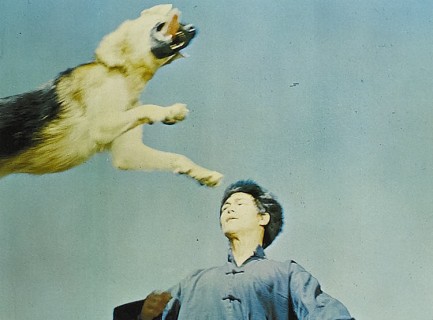 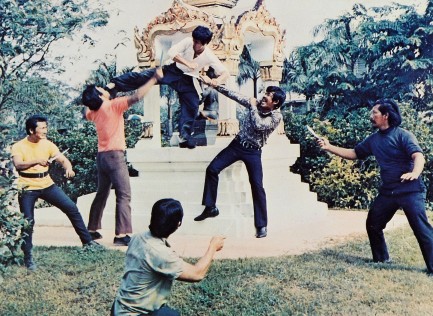 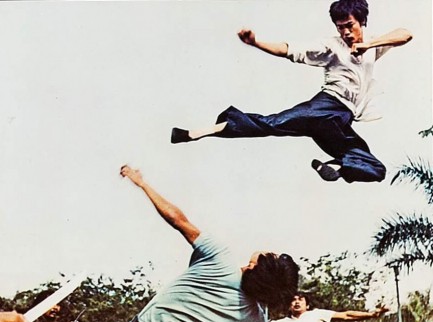 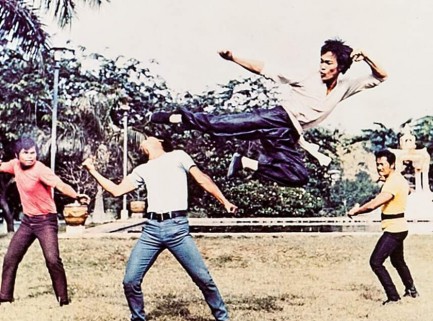 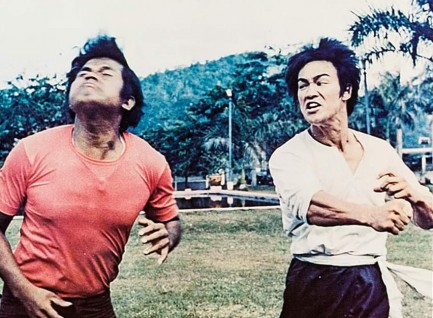 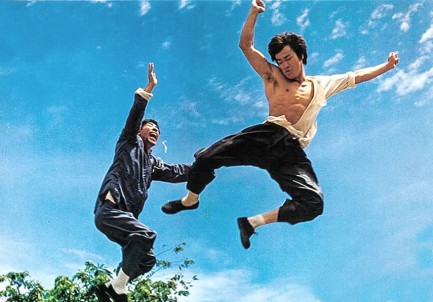 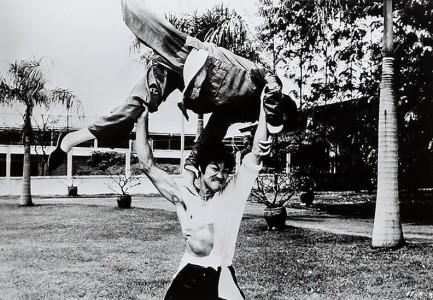 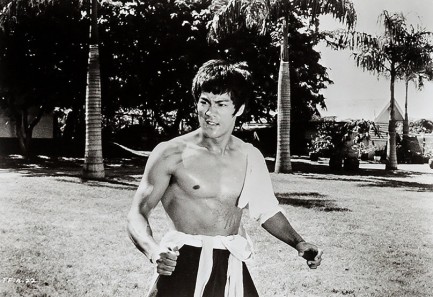 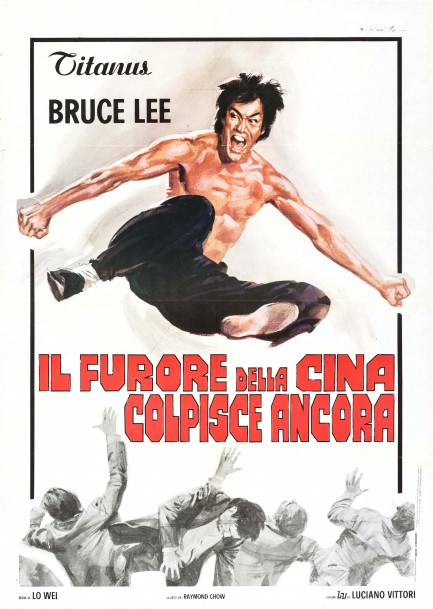
 First comes the sex, then comes the fury. 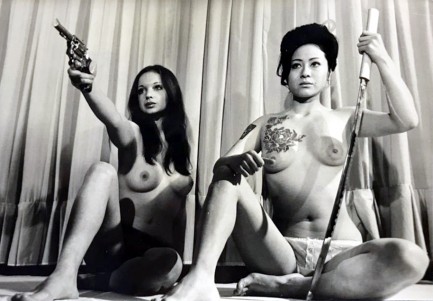
The landmark pinky violence flick Sex & Fury premiered today in 1973, so as tribute we have its female co-stars Christina Lindberg and Reiko Ike in a rare promo image, which came from the same session that produced this photo. If you're ever going to appreciate pinky violence cinema, Sex & Fury is a film that would be your gateway. But the genre isn't for everyone. The films are easy to hate, and for legitimate reasons. We have Sex & Fury's iconic promo posters available for viewing at this link, and don't forget—you get to see Reiko in a new image the first day of every month of 2022. The previous two are here and here.

|
 |

The headlines that mattered yesteryear.
1945—Mussolini Is Arrested
Italian dictator Benito Mussolini, his mistress Clara Petacci, and fifteen supporters are arrested by Italian partisans in Dongo, Italy while attempting to escape the region in the wake of the collapse of Mussolini's fascist government. The next day, Mussolini and his mistress are both executed, along with most of the members of their group. Their bodies are then trucked to Milan where they are hung upside down on meathooks from the roof of a gas station, then spat upon and stoned until they are unrecognizable. 1933—The Gestapo Is Formed
The Geheime Staatspolizei, aka Gestapo, the official secret police force of Nazi Germany, is established. It begins under the administration of SS leader Heinrich Himmler in his position as Chief of German Police, but by 1939 is administered by the Reichssicherheitshauptamt, or Reich Main Security Office, and is a feared entity in every corner of Germany and beyond. 1937—Guernica Is Bombed
In Spain during the Spanish Civil War, the Basque town of Guernica is bombed by the German Luftwaffe, resulting in widespread destruction and casualties. The Basque government reports 1,654 people killed, while later research suggests far fewer deaths, but regardless, Guernica is viewed as an example of terror bombing and other countries learn that Nazi Germany is committed to that tactic. The bombing also becomes inspiration for Pablo Picasso, resulting in a protest painting that is not only his most famous work, but one the most important pieces of art ever produced. 1939—Batman Debuts
In Detective Comics #27, DC Comics publishes its second major superhero, Batman, who becomes one of the most popular comic book characters of all time, and then a popular camp television series starring Adam West, and lastly a multi-million dollar movie franchise starring Michael Keaton, then George Clooney, and finally Christian Bale. 1953—Crick and Watson Publish DNA Results
British scientists James D Watson and Francis Crick publish an article detailing their discovery of the existence and structure of deoxyribonucleic acid, or DNA, in Nature magazine. Their findings answer one of the oldest and most fundamental questions of biology, that of how living things reproduce themselves.
|

|
|

It's easy. We have an uploader that makes it a snap. Use it to submit your art, text, header, and subhead. Your post can be funny, serious, or anything in between, as long as it's vintage pulp. You'll get a byline and experience the fleeting pride of free authorship. We'll edit your post for typos, but the rest is up to you. Click here to give us your best shot.

|
|























































































































































